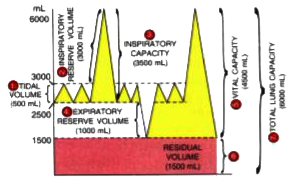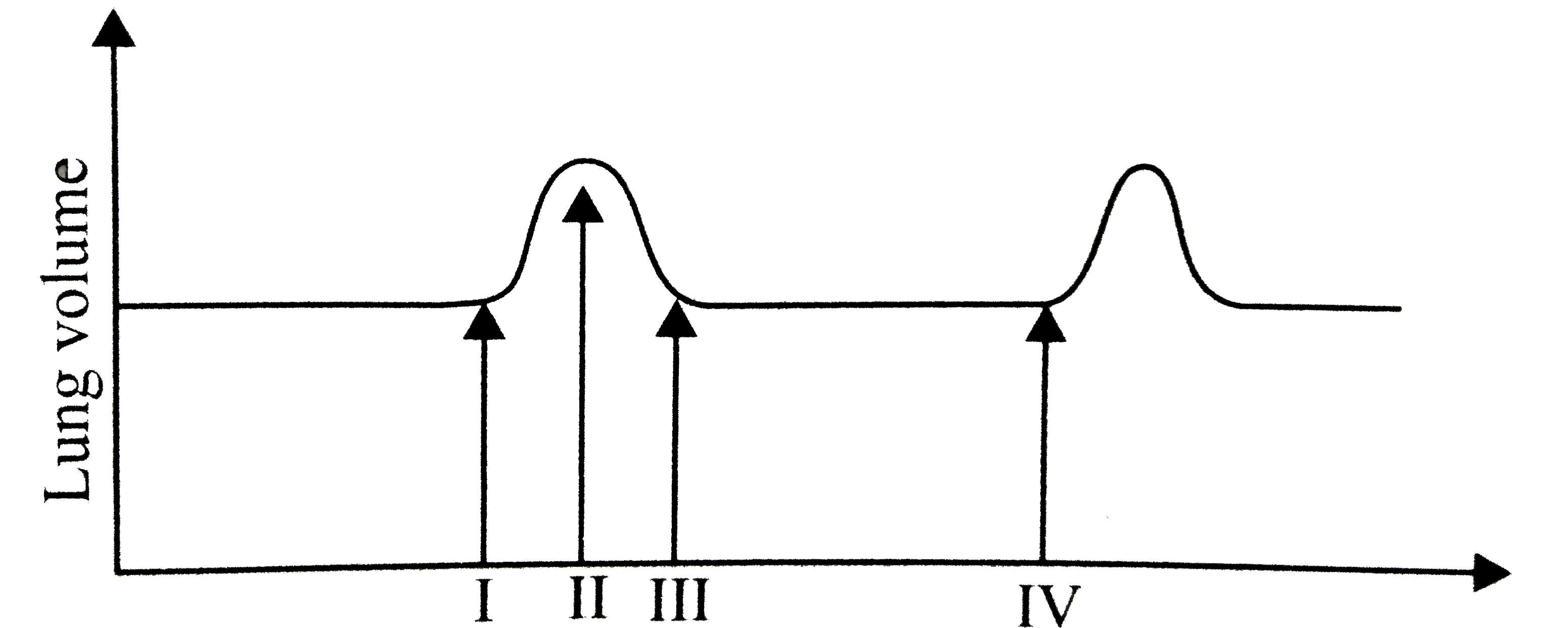Given these lung volumes
3500 mL
2000 mL
6000 mL
3000 mL
The correct Answer is:B
Step-by-Step Solution:
1. Identify Lung Volumes: We are given several lung volumes and need to identify what each volume represents.
2. 3500 ml Volume: This volume refers to the Inspiratory Capacity (IC). The Inspiratory Capacity is the maximum volume of air that can be inspired after a normal tidal expiration. It can be calculated as:
IC=TidalVolume(V)+InspiratoryReserveVolume(IRV)
Given that the Tidal Volume (V) is approximately 500 ml and the Inspiratory Reserve Volume (IRV) is 3000 ml, we can confirm:
IC=500ml+3000ml=3500ml
3. 2000 ml Volume: This volume represents the Inspiratory Reserve Volume (IRV) for women. The IRV is the amount of air that can be forcibly inhaled beyond a normal tidal inhalation. For women, this volume is approximately 2000 ml.
4. 3000 ml Volume: This volume also represents the Inspiratory Reserve Volume (IRV), but for men. The IRV for men is typically around 3000 ml, indicating the same concept as above but for a different demographic.
5. 6000 ml Volume: This volume corresponds to the Vital Capacity (VC). The Vital Capacity is the maximum amount of air that can be expelled from the lungs following a maximum inhalation. It is a crucial measure of lung function and is approximately 6000 ml.
Summary of Lung Volumes:
- 3500 ml: Inspiratory Capacity (IC)
- 2000 ml: Inspiratory Reserve Volume (IRV) for women
- 3000 ml: Inspiratory Reserve Volume (IRV) for men
- 6000 ml: Vital Capacity (VC)
IC=TidalVolume(V)+InspiratoryReserveVolume(IRV)
Given that the Tidal Volume (V) is approximately 500 ml and the Inspiratory Reserve Volume (IRV) is 3000 ml, we can confirm:
IC=500ml+3000ml=3500ml
- 3500 ml: Inspiratory Capacity (IC)
- 2000 ml: Inspiratory Reserve Volume (IRV) for women
- 3000 ml: Inspiratory Reserve Volume (IRV) for men
- 6000 ml: Vital Capacity (VC)
Topper's Solved these Questions
Similar Questions
Study the following spirogram and select the option that correctly identifies the lung volumes labeled A, B, C and D.

View SolutionThe volume of air in the lungs and the rate at which it is exchanged during inspiration and expiration was measured.
The following diagram shows a group of the lung volumes and capacities :

Study the diagram carefully and explain briefly the following:
(a) Tidal volume
(b) Inspiratory reserve volume
(c) Expiratory reserve volume
(d) Vital capacity
(e) Residual volume
View Solution
Knowledge Check
The given figure illustrates the changes in lung volume during the process of breathing.

The changes from II to III indicates theAmovement of diaphragm away from the lungsBexpansion of the thoracic cavityCmovement of air out of the lungsDexpansion of ribs.
Give the definition and normal values of lung volumes and lung capacities.
View SolutionThe total lung capacity including which of the following volumes ?
View SolutionMark the correct order of lung volumes
View SolutionWhich of the following volume of capacity of lungs
can't be measured directly by the spirometer?
View SolutionWhich of the following lung volumes or capacities can be measured by spirometer :
View SolutionLung Fluke is
View SolutionLung Fluke is
View Solution
